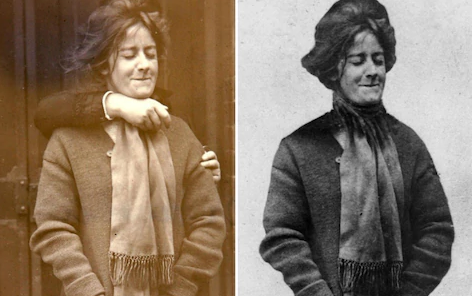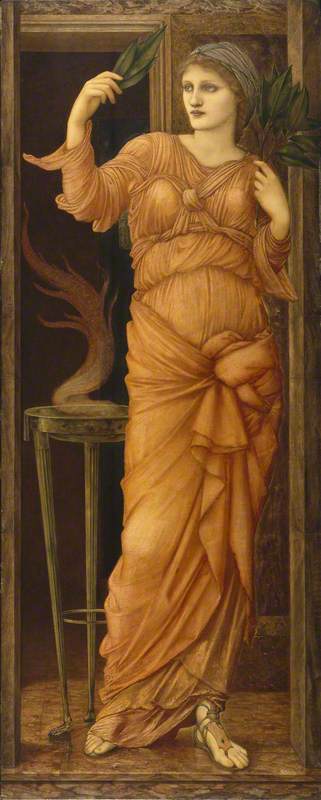
Daily Telegraph
Evelyn Manesta was the name given by one of the three suffragettes arrested for damaging with hammers the glass protecting thirteen pictures in Manchester Art Gallery on 3 April 1913; the other two women were Annie Briggs and Lillian Forrester, the organiser of the Manchester Women’s Social and Political Union (WSPU). On being apprehended by the gallery staff Lillian explained that the women had no intention of damaging the pictures, but that they had broken the glass in protest at the imprisonment earlier that day of fellow suffragette Emmeline Pankhurst.[1][a]Four of the paintings suffered some damage in the attack and all had to be reglazed. The cost of replacing the glass was £85, and repairs to two of the canvasses amounted to £25.[2]
The women had felt it was appropriate to make their protest in Manchester because that was the city where Pankhurst had founded the movement for women’s suffrage.[3]
None of the women denied the charge of malicious damage, so they were not required to stand in the witness box at their trial on 22 April 1913. Each of them did however choose to address the jury. Evelyn declared that she was a political offender, protesting that the law did not apply equally to men and women, and in particular the divorce laws.[4]
Evelyn claimed to be twenty-six years old and a governess. But other than this one incident nothing is known of her, leading to some speculation that the name was an alias used by an unknown suffragette.[1] As the undoctored picture of her head being held up by a prison warder shows, she certainly seems to have been reluctant to have her photograph taken.
For her part in the attack, Evelyn was sentenced to one month in prison. Annie Briggs was acquitted, but Lillian Forrester, as a repeat offender, was sentenced to three months imprisonment.[5][b]As Lilian Forrester was pregnant, she did not serve her full term but was released early.[5]
Motivation
Earlier on the day of the attack Emmeline Pankhurst had been sentenced to three years in prison for inciting an explosion at the house of Liberal MP David Lloyd George on 19 February 1903.[6]
Many of the pictures targeted by Evelyn, Lillian and Annie were idealised images of women. For them and for other suffragettes, it was an act of political symbolism to attack such images of women while real women suffered.[7]

